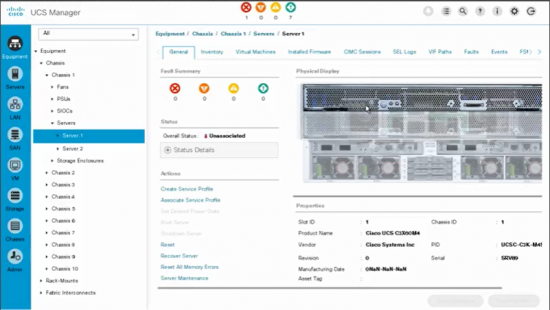The new UCS S-Series storage server leverages the automation and programmability of UCS management to provide greater levels of efficiency and flexibility.
Guest Blogger: Craig Ashapa, Technical Marketing Engineer
Last month Cisco introduced the new Cisco UCS –S-Series S3260 supported by a new release of UCS Manager. The S-Series features a very modular architecture, and it can support up to 600 TB of HDD storage and 90 TB SSD flash. To be honest, there are a couple of storage servers in the market that provide similar scalability, but none of them have the unique advantages of policy-based automation and integration with the broad UCS management partner ecosystem. Active data and data intensive workloads require the ability to carve up storage resources and manage them more dynamically. That’s why UCS management combined with the S-Series provides significant benefits for your organization
Automating Data Intensive Compute and Storage
When you are trying to provision significant amounts of storage and compute resources and achieve what we call “Data Unstored”, you need the efficiencies of automation and programmability. Active data requires the ability to manage resources rapidly and consistently. We introduced Storage Profiles in earlier releases of UCS Manager, but the S-Series really leverages the power of this functionality.
I wanted to help you understand the benefits of Service Profiles and how they differ from traditional disk geometry/volume creation methodologies, so I created this new demo video.
Click on Image to Start the Demo Video
Stepping You Through the Demo
The demo starts with an introduction of the UCS S3260, then it goes through several steps:
- Bringing the S3260 under UCSM management
- Chassis template and profile creation and association, including firmware package and disk zoning
- Server pool creation
- Storage Profile and Disk Group Policy creation
- Boot policy creation using a storage profile boot LUN
- Service Profile Template creation consuming storage profile, boot policy, and server pool
- Service Profile creation for 20 servers using a Service Profile Template
- Display 20 Service Profiles/Servers being created in parallel with the local disks being configured
If you are familiar with all the steps required to provision storage and compute without Service Profiles, you will realize the advantages of using UCS management to automate this process and provide you with programmatic control of the resources. Storage Profiles provide a systematic way to automate the steps for provisioning Disk Groups, RAID Levels, LUNs, boot drives, hot spares, and other related resources. They are used in combination with Service Profile Templates to map the associations between logically defined storage resources and servers.
If you’d like to learn more about the UCS S3260, click here.

Thank you for your post. We decided to try it as a company. (www.mebakademi.com) Especially “600 TB of HDD storage and 90 TB SSD flash” is very important for us.